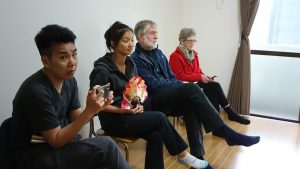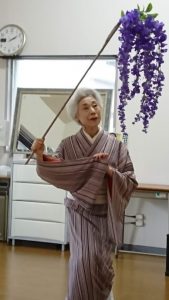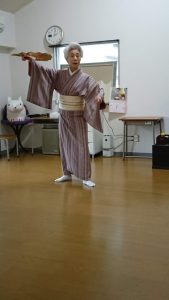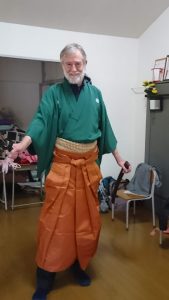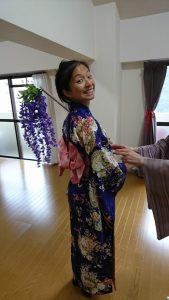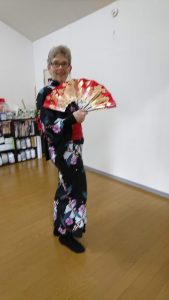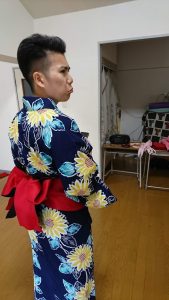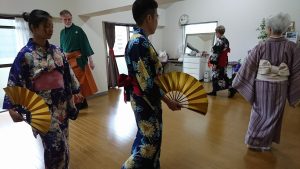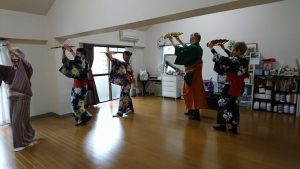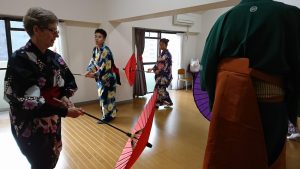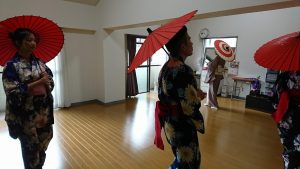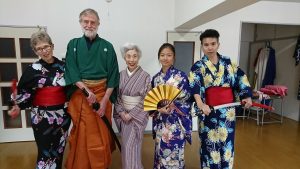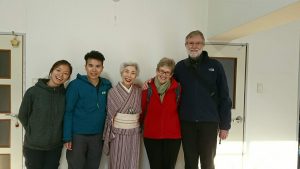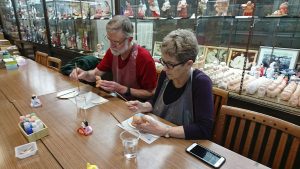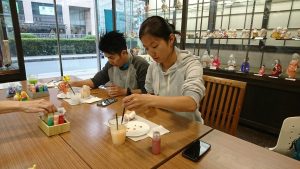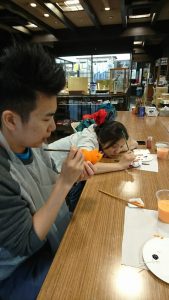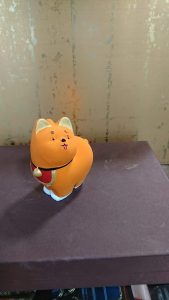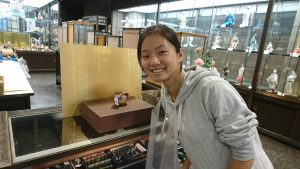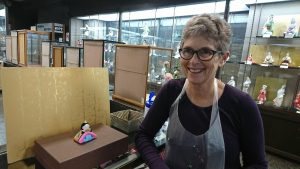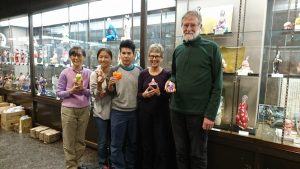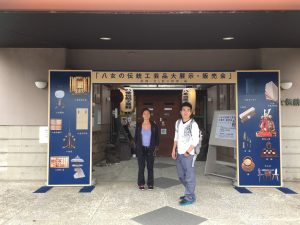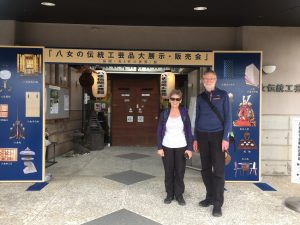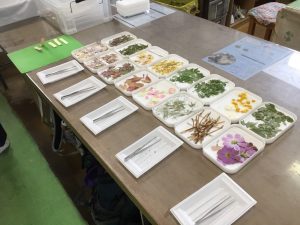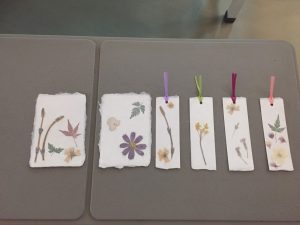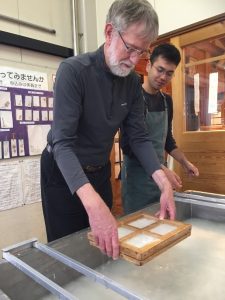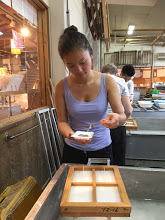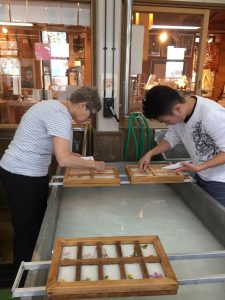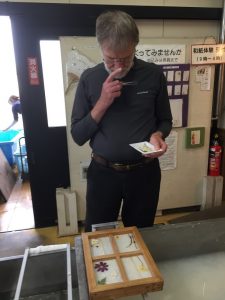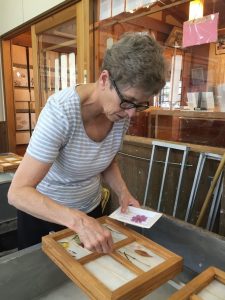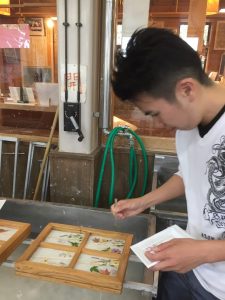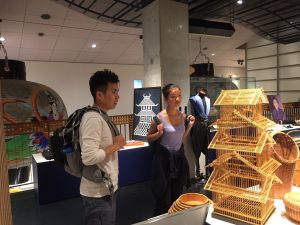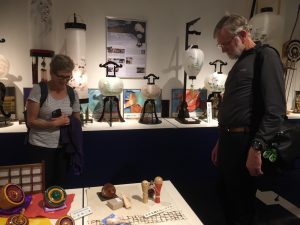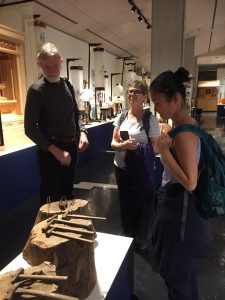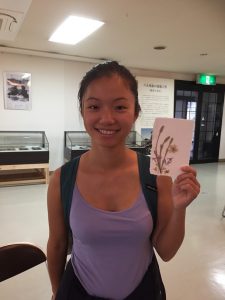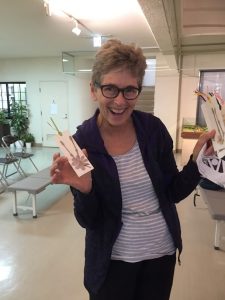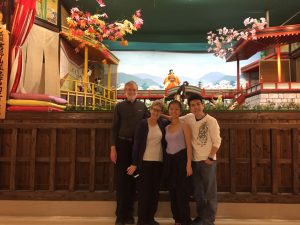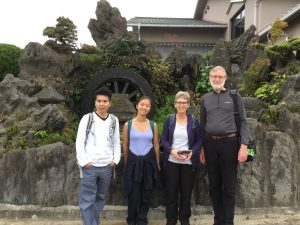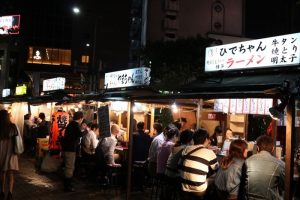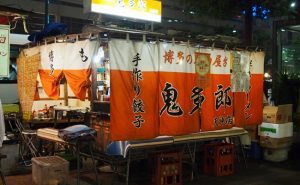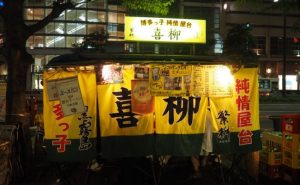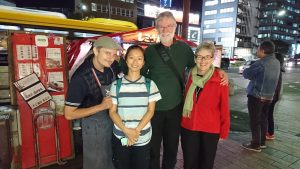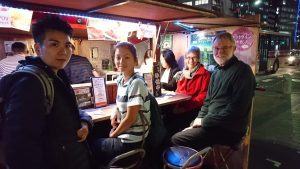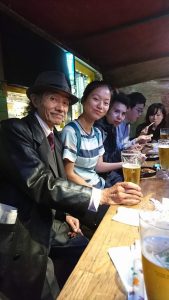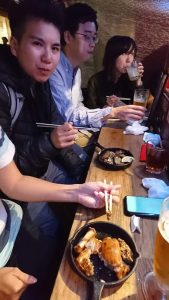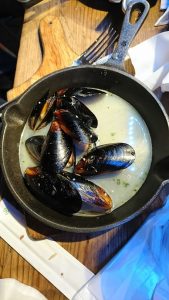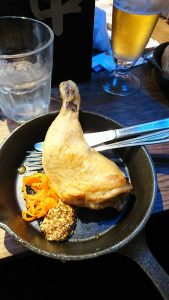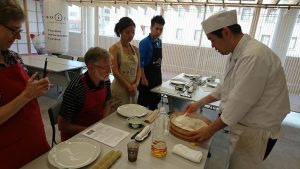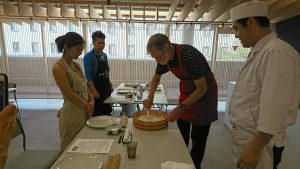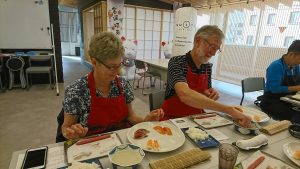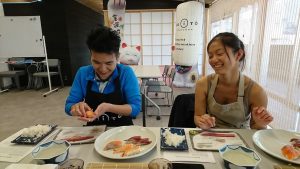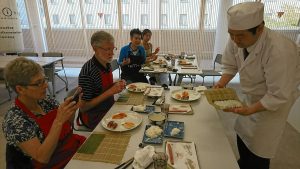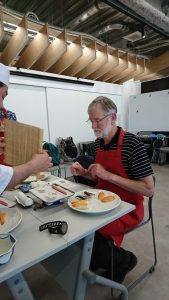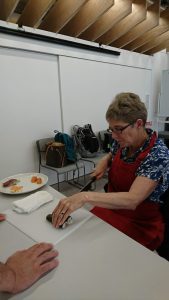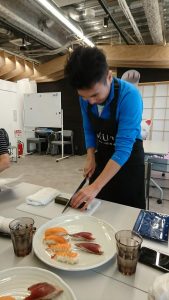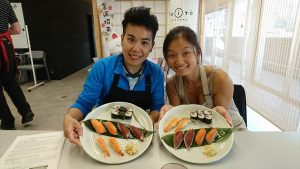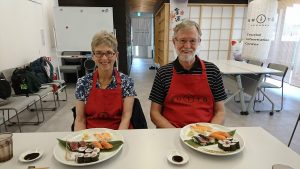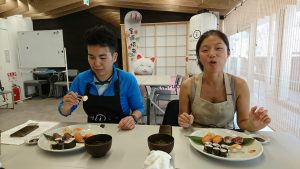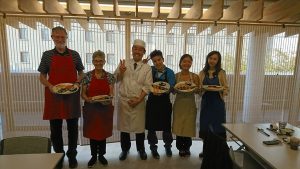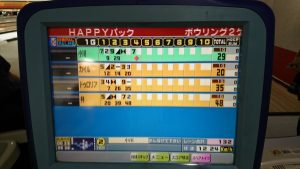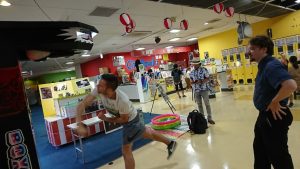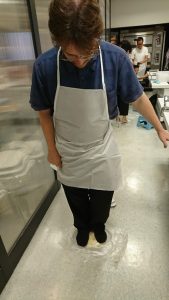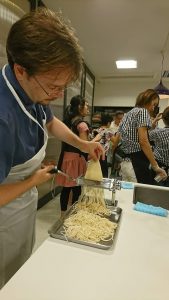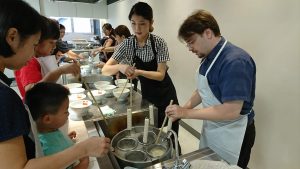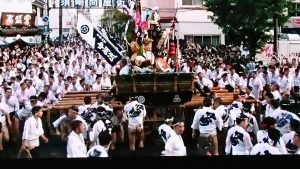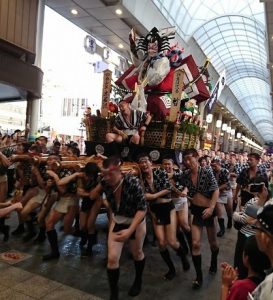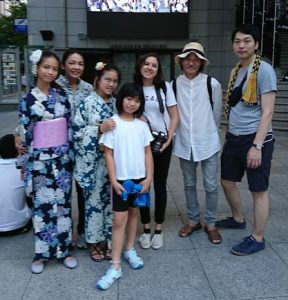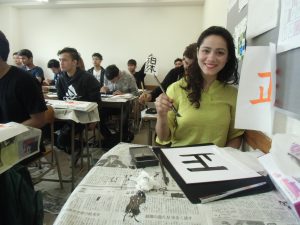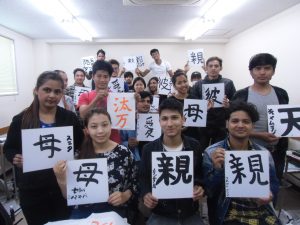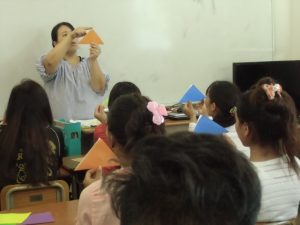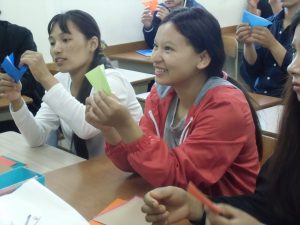短期コースのActivityはラーメン作りでした。ラーメンは福岡を代表する料理の一つです。今日は、ラーメン作りを体験した学生のコメントを学生本人が書いた日本語のコメントを一緒に紹介しますね。
Last week’s activity of the short-term program was cooking Ramen, one of the most popular cuisine in Fukuoka. We introduce the student’s comment about the activity. He wrote the comment both in Japanese and in English. He is now studying Japanese to prepare for the JLPT N2.
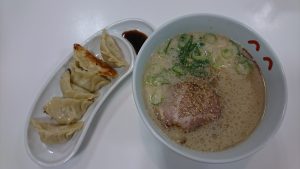
麺を作ることの経験がなくて、してみるのがわくわくしていました。いつもと同じ時間に起きて電車で竹下駅に乗って行きました。本当に暑かったです。大橋に着くと、おがた先生に待合せました。そこから博多周辺までおしゃべりしてバスを乗りました。チャイルドキッチンというお店に着きました。子供が本当に多かったです。子供たちもわくわくして落ち着かなかったです。私たちと同じテーブルで座っていたのは母と小学生息子二人の3人家族でした。キッチンの先生がまずルール説明しましたが、子供たちの興奮のせいで聞き辛かったです。頑張って聞いて、だいたい分かったと思います。
第一のステップは麺の生地作りでした。小麦粉に水を入れて力使って押しました。きつかったです。それが終わって、ビニール袋に入れて別に置きました。次は餃子作りでした。生地はキッチンスタッフが作ってくれて、私たちは薄くすることからはじまりました。棒を使って薄い生地を作りましたが、私のは綺麗じゃないなと思いました。大丈夫と言われても、もっと頑張りたいなと思いました。中身もスタッフが作ってくれたけど、自分の作りたかったです。生地の上に中身が乗せて、包むことのために中身の油が生地の外側に付きました。それが大変だと思いました。包んで餃子のような形を指で作りました。
次のステップの準備で、靴を脱いでくださいと言われてびっくりしました。麺の生地がビニールのままで床に置いて足で踏みました。こういうことの経験が全くありませんでした。ビニールのせいで滑りやすくて面白かったです。生地が薄くなったらまた台の上に戻して4分に分けました。一つずつパスタマシンに入れてもっともっと薄くしました。四つとも大変薄くなったら、麺作りのアタッチメントがパスタマシンに付けてまた生地を入れました。それでやっとラーメンの様子になりました。本当に嬉しかったです。その間スタッフがテーブルに来て鉄板みたいなグリルを準備しました。その上に餃子を並んで焼きました。焼いてる間に麺を持ってキッチンの前に行きました。そこで皆一人ずつお湯に麺を入れて10秒間待って出来上がりました。スープやトッピングもスタッフ準備してくれて、麺も餃子も同じタイミングで出来てすぐ食べてきました。やっぱりおいしかったです。麺の残り物を持って帰ってその夜も食べました。
このラーメン体験は本当によかったと思います。また自分で麺を作りたいなと思っています。(Original text)
This was my first time making noodles by hand, so I was very excited to try it. I got up at my usual time and took the train to Takeshita station. It was extraordinarily hot that day as I walked from Takeshita to Ohashi. I met with Ms. Ogata and we chatted as we rode the bus to the kitchen near Hakata. At the location, there were mostly children. It was very noisy as the children were excited and couldn’t settle down. There was a family at the same table as myself and Ms. Ogata. The family was a mother and her 2 sons, both elementary school age. The instructor for the event began by explaining some safety rules. Some things were hard to hear over the children, but overall I could understand.
The first task we did was making the dough for the noodles. I kneaded the dough with water until it was firm. It was very tiring. We then set the dough aside in a plastic bag for later. The next step was making the gyoza. We rolled out the wrappers for the gyoza with a small rolling pin. I noticed mine were not very pretty. I was told it was ok, but it made me want to do better. We then put the filling on the wrappers. The filling was provided by the kitchen, but I wish I could have made it myself. We had to apply some oil from the filling to the outside of the wrappers using a spoon, which I found difficult to do. Then, we folded the gyoza closed and pinched them to make the traditional gyoza shape, and set them aside for grilling later.
Next, I was asked to take off my shoes and stomp on the noodle dough to flatten it. This was a new experience for me. It was a little bit slippery. The next step was cutting the dough into four equal pieces and then putting it through the pasta machine. First we used the basic machine to flatten the dough more and more until it was very thin. Next we added the noodle attachment and put the flat pieces in to make actual ramen shaped noodles. This was a very interesting experience for me and made me wish I had my own pasta machine. After making the noodles, one of the staff members readied the grill and we put all the gyoza on to cook them. While they were cooking, many groups would go to the front of the kitchen and cook the noodles. It only takes 10 seconds in boiling water to cook ramen noodles. I was surprised at how quick it is. The soup and toppings were also prepared by the kitchen, so after cooking the noodles we just put on whatever toppings we liked, took the gyoza from the grill, and sat down to eat. They turned out pretty well. I took home a portion of the noodles I made and had some of them for dinner that night.
I had a good time making noodles and want to try it again on my own some time. —Kyle, USA
